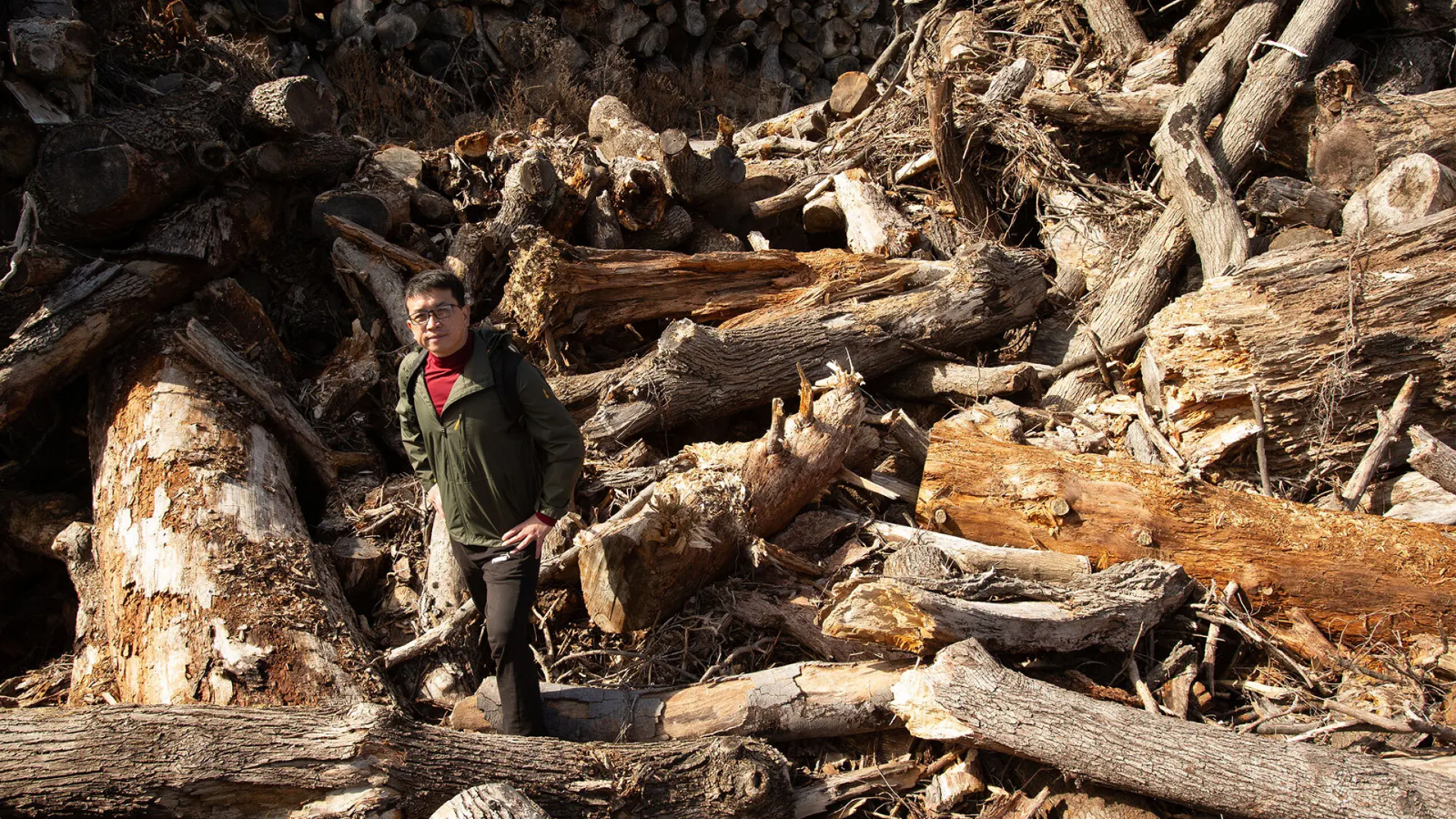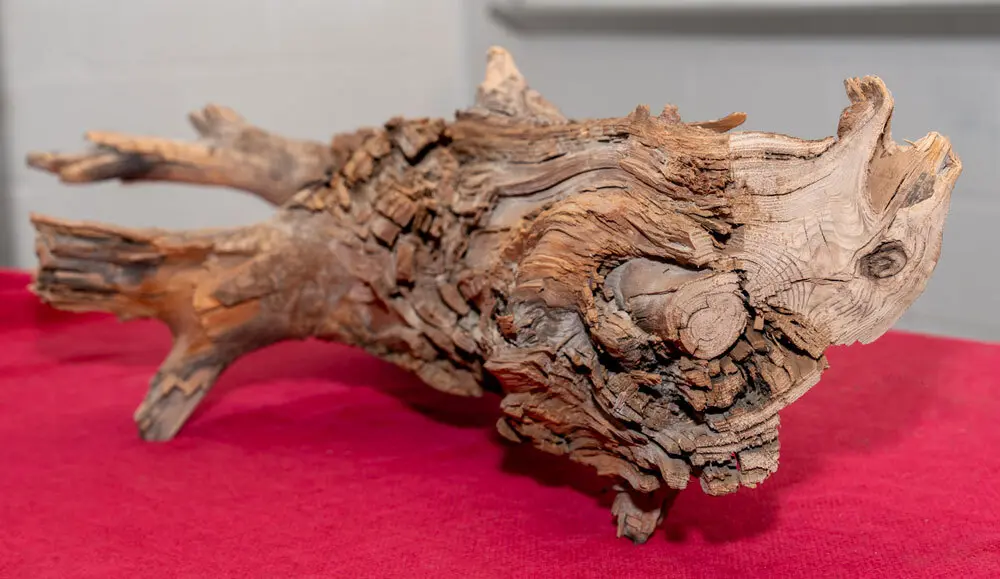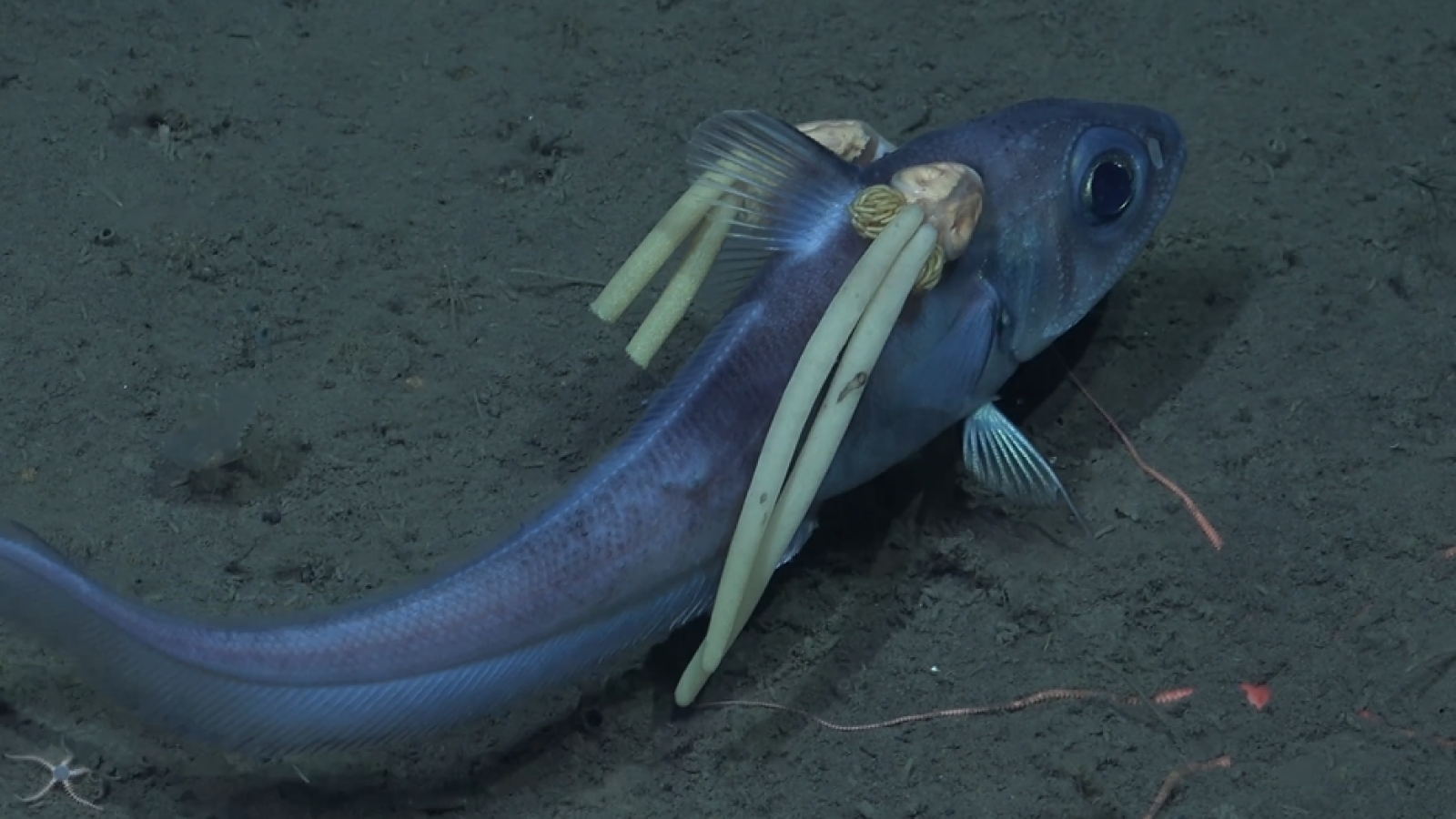Ancient piece of driftwood hidden for thousands of years could hold secrets for combating climate change
A 3,775-year-old log found in Canada had barely lost any of its carbon content since being buried, indicating "wood vaulting" is a viable means of carbon storage.

A really old and remarkably well-preserved log buried almost 4,000 years ago provides key evidence to support a simple and effective way of locking away carbon to reduce greenhouse gas emissions — burying dead trees in giant graveyards — scientists say.
In a paper published Sept. 26 in the journal Science, researchers describe the discovery of a 3,775-year-old log in Saint-Pie, Quebec, Canada. This stump was unearthed during a 2013 project that aimed to identify sites for so-called wood vaults, which entomb woody biomass under a layer of clay soil to prevent reentry of carbon to the atmosphere.
Wood vaulting is a form of biological carbon sequestration — utilizing the ability of living things to capture carbon. Lead author Ning Zeng, a climate scientist at the University of Maryland who has a company aiming to commercialize the technology, first published research on burying wood to sequester carbon in a 2008 paper.
The log, "is a single data point," Zeng told Live Science. "But it tells you: if you bury wood under these conditions, it's going to work. So it's a very critical data point. It's really immediately implementable."
The log, which belonged to an Eastern red cedar (Juniperus virginiana), was discovered beneath 6.5 feet (2 meters) of blue clay near the edge of a creek bed.
"It's driftwood. It just got dumped there — possibly during a flooding event," Zeng said.
Sign up for the Live Science daily newsletter now
Get the world’s most fascinating discoveries delivered straight to your inbox.
The clay sediment preserved the wood by suppressing the growth of any microorganisms that might have facilitated its decay — little oxygen is able to penetrate the dense, water-saturated clay particles.
The authors add that the lignin and holocellulose (the main components of wood) of the log are already resistant to decay — though had the log remained above ground, fungi and other organisms would have made relatively quick work of it. Because of the lack of oxygen in the environment where the log was preserved, only anaerobic bacteria could survive.

These bacteria would only have been able to digest the outer layers of holocellulose, a carbohydrate found in plants. They cannot digest lignin — a polymer that gives plants their rigidity — and would have been unlikely to penetrate the inner layers of wood.
"The cell structure is almost intact," Zeng said.
Carbon dating established that the log had been buried for nearly four millennia. Infrared spectroscopy and scanning electron microscopy showed it had retained the majority of the carbon it drew from the atmosphere during its lifetime.
According to the paper, the log contains around 5% less carbon than a modern log harvested from the same species of tree, though the differing environments in which modern and ancient trees grew may affect that amount.
The findings are proof of concept for wood vaulting, the scientists said. While plant life can suck up atmospheric carbon — removing billions of tons of carbon dioxide annually — much of it is quickly returned to the atmosphere when plants decay or are burned. The authors believe that large-scale burial of trees could change that — potentially compensating for nearly a third of our annual fossil fuel emissions.
They argue that waste wood from urban trees and managed forests could be diverted to wood vaults with relative ease and cost efficiency. Clay soils are widespread, Zeng said, and sites could be repurposed for agriculture or solar farming once the wood is buried.
Zeng has already completed several pilot projects through his company Carbon Lockdown. Other companies are leveraging the technology as well — a company partially funded by Bill Gates is burying wood in the Nevada desert. And researchers have proposed burying fast-growing plants such as grasses to sequester carbon as well.

Richard Pallardy is a freelance science writer based in Chicago. He has written for such publications as National Geographic, Science Magazine, New Scientist, and Discover Magazine.









